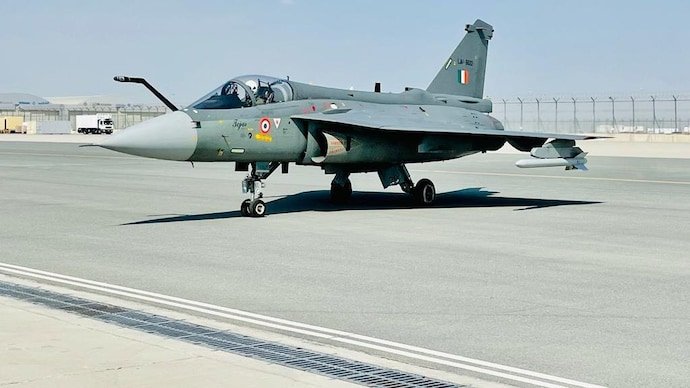New Delhi: The Indian Air Force (IAF) is set to receive its first Light Combat Aircraft (LCA) Tejas MK-1A in the last week of October 2025, marking a pivotal moment for India’s indigenous fighter jet programme.
Defence Minister Rajnath Singh is scheduled to attend the first flight event in Nashik on October 17, where he will also visit Hindustan Aeronautics Limited’s (HAL) production facilities and meet staff directly involved in manufacturing. HAL’s current order for 83 Tejas MK-1A jets, originally slated to commence deliveries in February 2024, has been delayed due to slow supply of General Electric (GE Aerospace) F404-IN20 engines.
With GE providing only one to two engines per month, HAL now aims to complete deliveries within a four-year window, assuming no further disruptions. This production slowdown has impacted IAF’s plans for rapid squadron replenishment. Negotiations for an additional batch of 97 Tejas MK-1A fighters are reportedly in the final stages. Talks are underway between the Ministry of Defence and GE Aerospace to secure engine supply contracts that can sustain accelerated manufacturing. If finalised, this would bring the total MK-1A fleet to 180 aircraft, greatly boosting domestic capabilities and reducing dependence on aged platforms.
IAF squadron strength currently stands at 29, significantly below the sanctioned level of 42. The recent decommissioning of two MiG-21 squadrons has widened the gap, leaving the force stretched in maintaining operational readiness. Air Chief Marshal Amar Preet Singh has expressed concern over the pace of deliveries, noting that the force requires at least two squadrons — 30 to 40 aircraft — per year to maintain an optimal operational posture.
Adding to the medium-term fighter procurement plan, the IAF’s long-pending proposal to acquire 114 Multi-Role Fighter Aircraft (MRFA) continues to move through procedural channels. The Defence Ministry is weighing a ‘Made in India’ variant of the Rafale for this programme, with at least 18 aircraft expected to be delivered off-the-shelf in the near term to meet immediate requirements. Dassault Aviation has stated that global Rafale orders total 533 jets, with 233 still in production, and its monthly output has ramped up to four aircraft.
In strategic parallel, the Indian government has sanctioned over ₹15,000 crore for the Advanced Medium Combat Aircraft (AMCA) project. Designed as India’s first indigenous fifth-generation stealth fighter, the AMCA is expected to achieve its maiden flight within this decade and enter operational service around 2035. This programme aims to secure long-term self-reliance in advanced fighter aircraft production.
Defence experts assess that India will need an additional 200-250 fighter aircraft beyond current orders to address its combat capability gap and counter regional threats. They emphasise the necessity of establishing parallel indigenous production lines to ensure sustained delivery rates. Without such measures, bridging the squadron shortfall could stretch into the next decade, affecting readiness for multi-front contingencies.




